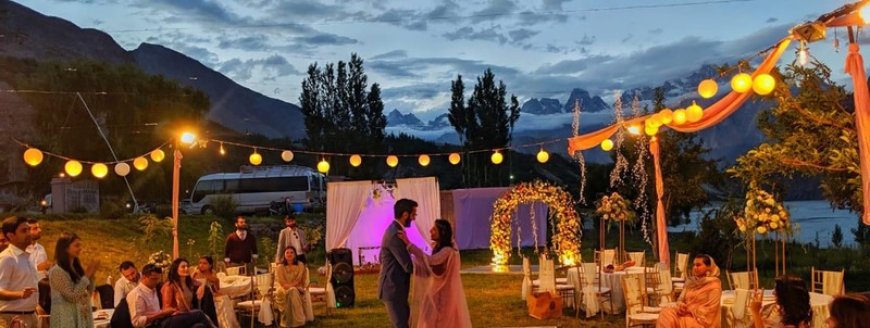Pakistani Weddings vs Reality The True Economics of Mehendi, Baraat, Walima
Explore the real economics of Pakistani weddings—Mehendi, Baraat, and Walima—beyond glamour, highlighting costs, traditions, and realities.

Weddings in Pakistan are not just about two people getting married. They are about families, culture, and celebration. Every event is filled with color, laughter, and traditions that go back generations. But behind the music, food, and glamour lies another truth: the huge costs that come with these grand celebrations.
From the Mehendi to the Baraat and the Walima, Pakistani weddings can be beautiful, but they can also be very expensive. Let’s take a closer look at what really goes on behind the scenes and how these events affect both families and the economy.
The Mehendi: Full of Color, But Heavy on the Wallet
The Mehendi is usually the first event of a Pakistani wedding. It is a night of music, dancing, and fun, with the bride's hands covered in beautiful henna designs. But all that color and energy come with a price.
Major Costs in a Mehendi:
-
Venue: Many families rent banquet halls or marquees instead of hosting at home. Costs can range from PKR 100,000 to 500,000, depending on the city and decoration.
-
Decorations: Bright colors, flowers, fairy lights, and stage setups can cost between PKR 50,000 to 500,000.
-
Clothing: Brides often wear custom or designer dresses costing PKR 50,000 to over 1 million. Grooms and guests also dress up in traditional outfits.
-
Food: A proper buffet is a must, with catering costs running between PKR 100,000 to 300,000.
The Reality:
The Mehendi may look lighthearted, but it is often the first time families feel the financial pressure. Many overspend to make sure everything looks perfect on social media, turning a joyful night into a costly one.
The Baraat: The Main Event, The Main Expense
The Baraat is the highlight of every Pakistani wedding. It is the official wedding ceremony and also the most expensive part.
Key Expenses in the Baraat:
-
Venue: Big halls or luxury hotels can cost anywhere from PKR 200,000 to 2 million.
-
Outfits: A bridal dress can range between PKR 200,000 and over 1 million, while the groom's attire costs around PKR 50,000 to 200,000.
-
Photography and Videography: Professional teams charge between PKR 100,000 to 500,000, especially for pre-wedding shoots and drone coverage.
-
Catering: Lavish food spreads for hundreds of guests can easily reach PKR 300,000 to 2 million.
-
Entertainment: DJs, live bands, or performers can cost over PKR 100,000, sometimes much more.
The Reality:
Families often spend beyond their means to host a grand Baraat. Loans, credit, and savings are commonly used to fund it, leaving many under financial stress. The pressure to impress relatives and guests makes it hard to stay within budget.
The Walima: A Grand Finale with a Big Price Tag
The Walima, hosted by the groom's family, marks the end of the wedding festivities. It is meant to be a graceful and elegant event, but it is far from cheap.
Key Expenses in the Walima:
-
Venue: Typically costs between PKR 150,000 and 1 million.
-
Catering: A large buffet for guests can range from PKR 200,000 to 1 million.
-
Decor: Floral and lighting setups usually cost PKR 100,000 to 500,000.
-
Outfits: Brides and grooms wear new clothes again, with costs from PKR 50,000 to 500,000.
The Reality:
Even though the Walima is less flashy than the Baraat, it still puts pressure on families to maintain appearances. The desire to keep up with others often leads to unnecessary spending.
The Bigger Picture: Pakistan’s Wedding Economy
Pakistani weddings are a major part of the economy. Thousands of people earn a living through this industry, including event planners, caterers, photographers, decorators, and designers.
But on the flip side, these celebrations create financial stress for families. The cultural pressure to host lavish events often forces people to spend more than they can afford. The idea of keeping up with others has made weddings more about competition than celebration.
The Bottom Line
The Mehendi, Baraat, and Walima are important parts of Pakistani culture. They celebrate love, family, and tradition, but they also reveal the growing financial burden that comes with maintaining appearances.
In the end, a wedding should be about the union of two people, not the size of the stage or the number of dishes on the menu.
As expenses rise every year, it is time for families to find a balance between tradition and practicality. True celebration lies not in extravagance, but in joy, love, and togetherness.
For more updates, Visit Nation bytes

 Israr Ahmed
Israr Ahmed